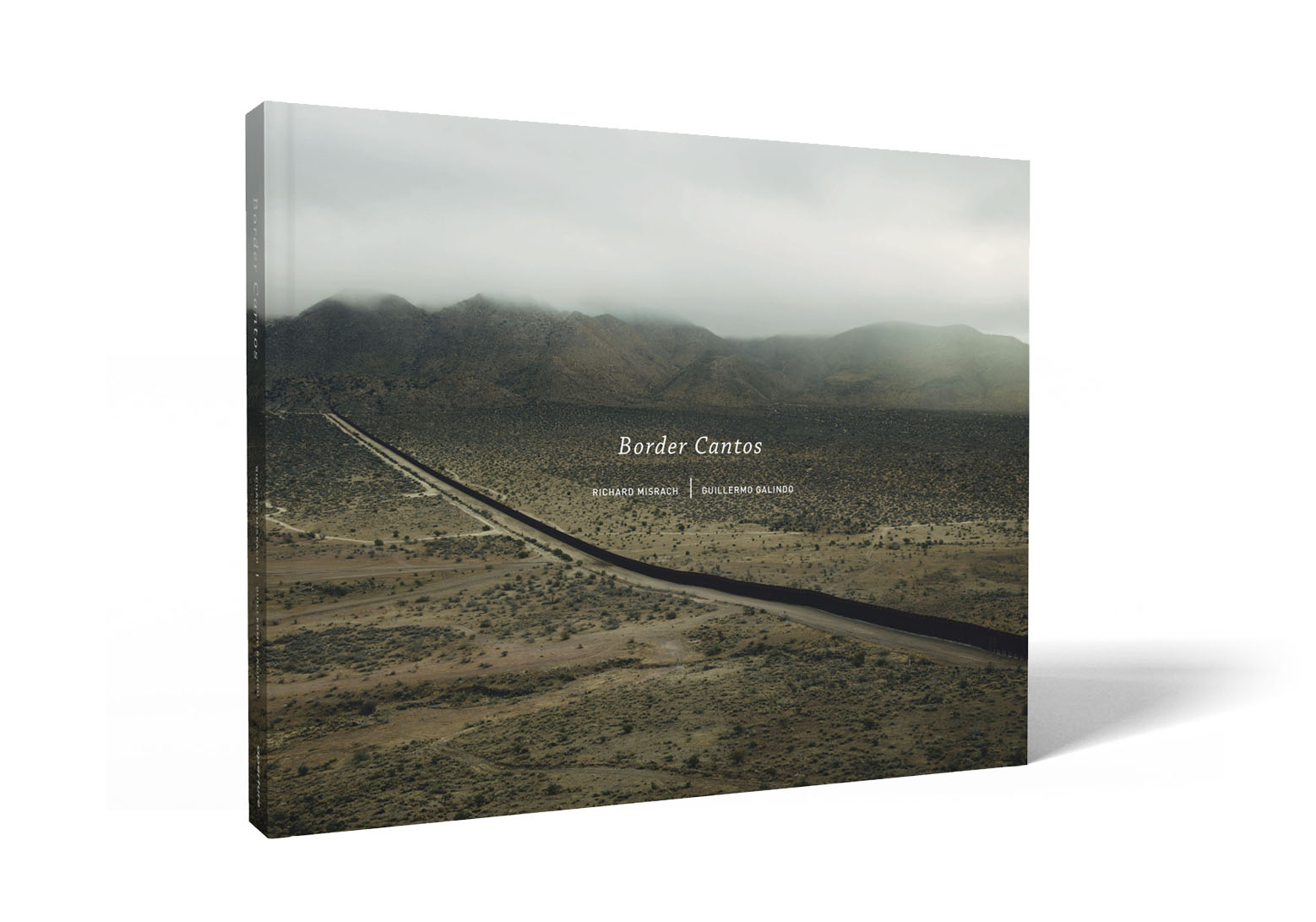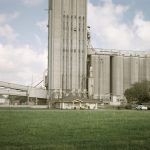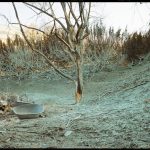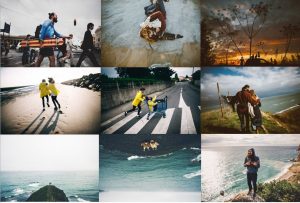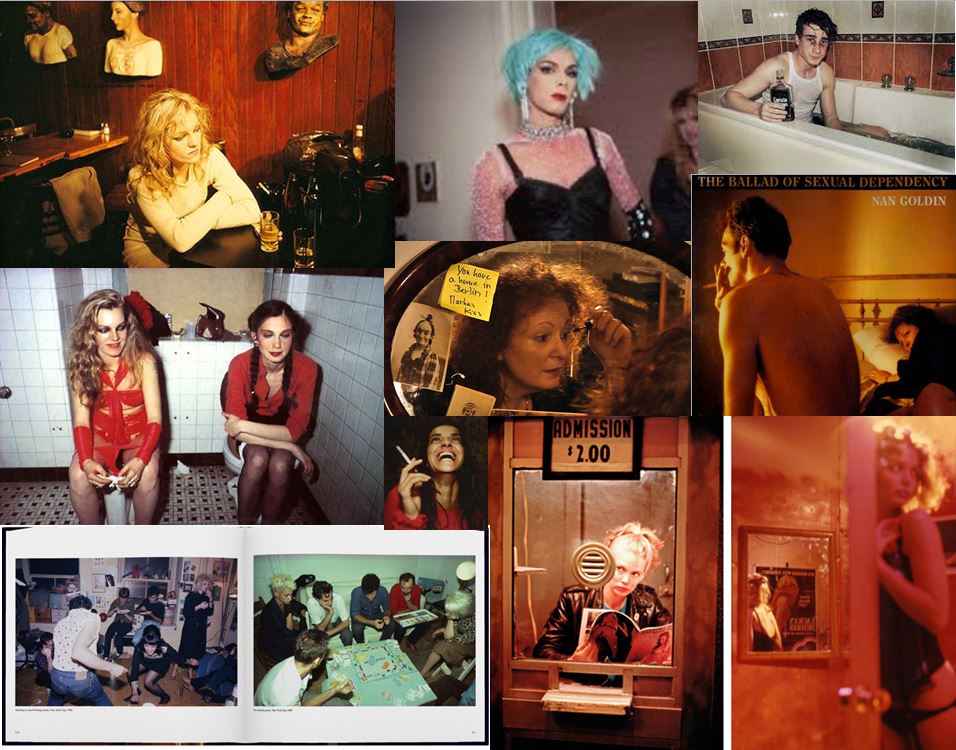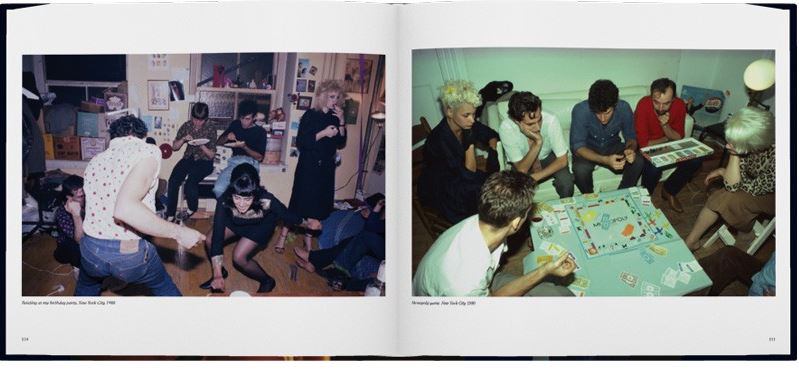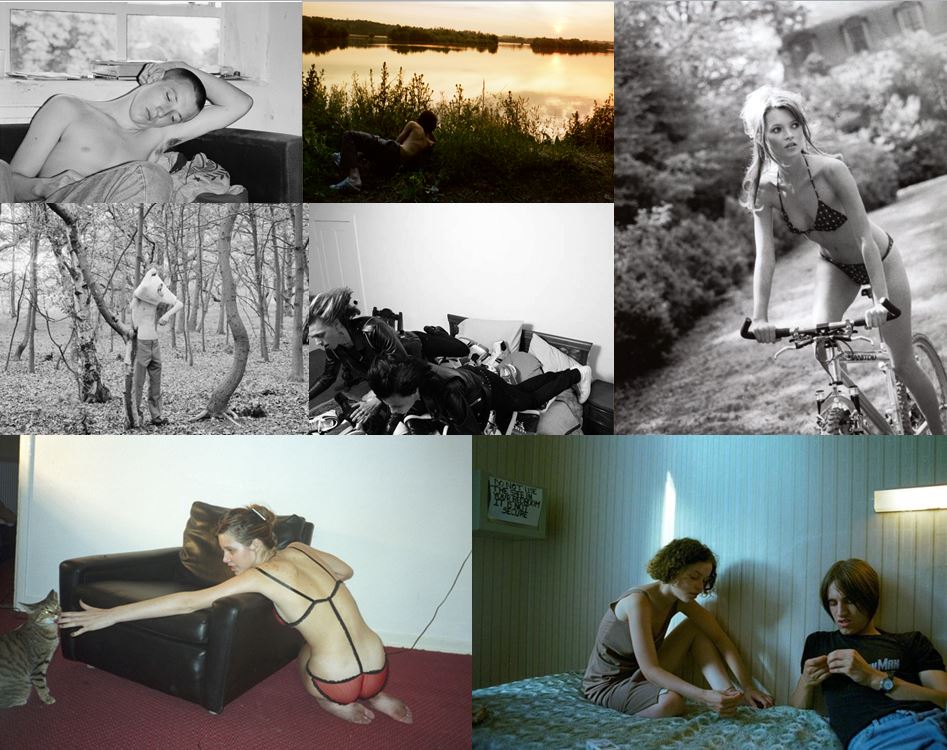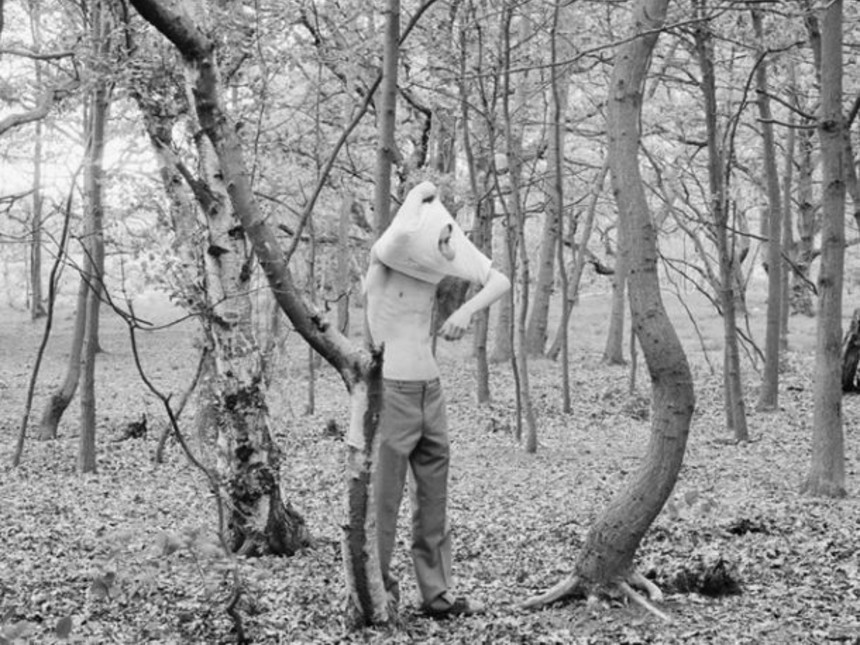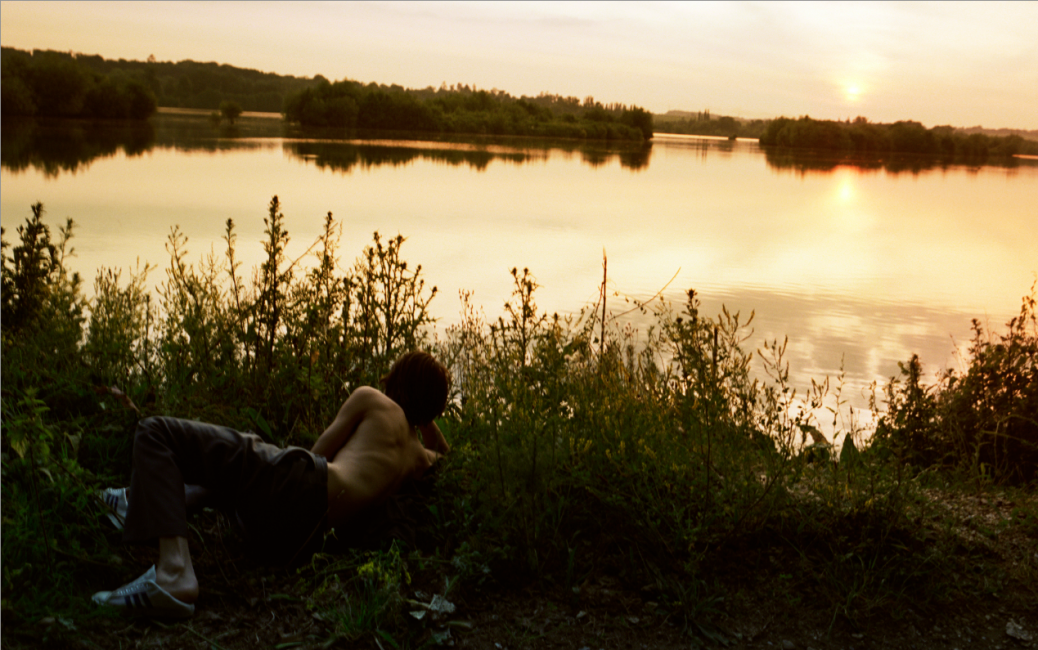Steven Hirsch is a brilliant photographer and teacher that was born and raised in Williamsburg, Brooklyn. Now based in New York’s East Village, his photographs have been seen in many major news publications such as ‘The New York Times’, ‘The Huffington Post’ and ‘Time’. Apart from this, he has also been awarded two of the ‘New York Foundation for the Arts’ grants and his work has been widely exhibited and collected by many prestigious museums. Hirsch’s photography has covered a diverse subject matter, including his project ‘Courthouse Confessions’, a visual chronicling of the defendants who passed through the Manhattan Criminal Court Building. Yet despite all of his achievements the reason I have chosen him to be my first inspiration for my project is because of one of his more controversial collections names ‘Gowanus’.
“Gowanus: Off The Water’s Surface” is a series of photographs portraying the horribly polluted waters in the Gowanus Canal, Brooklyn, New York. The toxic liquid that fills the Gowanus Canal today is not commonly referred to as alluring, celestial, beautiful. Yet through Hirsch’s eye’s, we see sludge, chemicals, and waste products become vibrant and moving images of colour. When Hirsch began shooting for this project in 2014, he took photographs in the Spring. “Because of the time of year, there was a runoff,” he says. “There was a lot of surface pollution because of that, which made it very interesting”. These depictions reveal a deep rich world of abstract shapes and explosive colour, the photographs are painterly in style, with Impressionistic hints of hue and texture. Within the pollution, surreal worlds are depicted and visions of figures, faces and bodies, and natural forms like waterfalls, landscapes, glaciers, or galaxies arise. These images were first featured in 2010 on ABC News online and more recently in The New York Times and the Daily Mail, despite being met with bitter controversy. I think this series makes an amazing start to my ‘environment’ project because they show a very abstracted and beautiful version of the truth. These images will be admired whether the viewer cares about the canals pollution levels or not. I love the way he has taken something so horrible and turned it into something beautiful, thus subtly informing the public of their society’s environmental problems. Below I have chosen five pieces from this series and evaluated each one.
– beautiful abstract photographs of polluted water by Steven Hirsch. – ‘Gowanus’ 2014.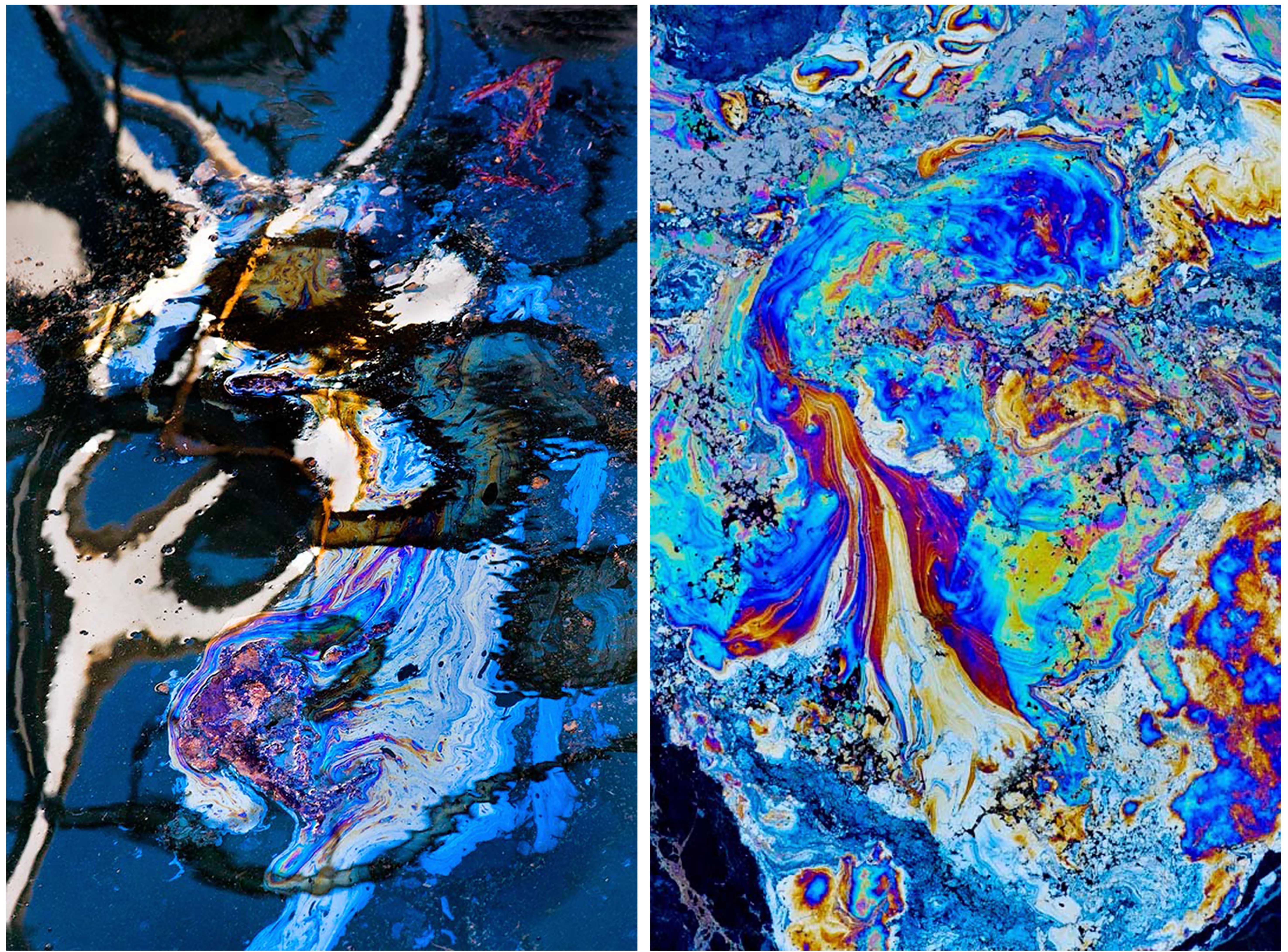 The first photographs that caught my eye from this series are the two abstract ‘painting like’ pieces above. The photograph on the left shows a dark and beautiful mixture of blue canal water, black shadows, multicoloured oil and gold reflections. This piece is entitled ‘Epiales’, which in Greek mythology is the name of the spirit and personification of nightmares. Because of this mythical context, we can assume it is more about the colours, shapes and beautiful symbolism; then the recording societies effect on the canal. However, I believe that because of the nature of this represented character being the ‘personification of nightmares’, this image takes on a much deeper meaning. Human culture naturally and ‘accidentally’ creates these beautifully sickening masterpieces on the water’s surface, so traumatic to the environment it can be compared with nightmares. The photograph on the right comes at this theme from a different viewpoint. Entitled ‘Chloris’, the goddess of flowers, it seems as if it would have a much happier theme. This, however, is not possible with the vibrant, unnatural and toxic colours swirling together mimicking and possibly one day replacing the natural colours found in beautiful untouched flowers.
The first photographs that caught my eye from this series are the two abstract ‘painting like’ pieces above. The photograph on the left shows a dark and beautiful mixture of blue canal water, black shadows, multicoloured oil and gold reflections. This piece is entitled ‘Epiales’, which in Greek mythology is the name of the spirit and personification of nightmares. Because of this mythical context, we can assume it is more about the colours, shapes and beautiful symbolism; then the recording societies effect on the canal. However, I believe that because of the nature of this represented character being the ‘personification of nightmares’, this image takes on a much deeper meaning. Human culture naturally and ‘accidentally’ creates these beautifully sickening masterpieces on the water’s surface, so traumatic to the environment it can be compared with nightmares. The photograph on the right comes at this theme from a different viewpoint. Entitled ‘Chloris’, the goddess of flowers, it seems as if it would have a much happier theme. This, however, is not possible with the vibrant, unnatural and toxic colours swirling together mimicking and possibly one day replacing the natural colours found in beautiful untouched flowers. These next two astral looking images really express the representation of this project well for me. On the left is a piece entitled ‘Phorcys’, in greek mythology, meaning the ancient sea-god of the hidden dangers. Although this piece looks like a galaxy to me, with its bright colours and deep black background, the title has completely changed its context. Now knowing that this image relates to the dangers of the sea it is a clear representation of constant man-made disasters, like oil spills, that pollute our oceans. I love the beauty he has captured of the oil shimmering on the water’s surface and the ripples that really emphasises its dark and daunting meaning. The next photograph on the left is a bit more straight-forward as it is indeed meant to appear as a constellation of stars. The title of this image, ‘Pleiades’, is named after the seven mountain-nymph sisters who were banished to live amongst the stars. In astronomy ‘Pleiades’ is an open star cluster dominated by hot blue and extremely luminous stars that have formed within the last 100 million years. This astral depiction of all of these dead inhabitable stars (showed with canal pollution) for me, represents the bigger picture of the universe and our underappreciation of Earth as a source of life.
These next two astral looking images really express the representation of this project well for me. On the left is a piece entitled ‘Phorcys’, in greek mythology, meaning the ancient sea-god of the hidden dangers. Although this piece looks like a galaxy to me, with its bright colours and deep black background, the title has completely changed its context. Now knowing that this image relates to the dangers of the sea it is a clear representation of constant man-made disasters, like oil spills, that pollute our oceans. I love the beauty he has captured of the oil shimmering on the water’s surface and the ripples that really emphasises its dark and daunting meaning. The next photograph on the left is a bit more straight-forward as it is indeed meant to appear as a constellation of stars. The title of this image, ‘Pleiades’, is named after the seven mountain-nymph sisters who were banished to live amongst the stars. In astronomy ‘Pleiades’ is an open star cluster dominated by hot blue and extremely luminous stars that have formed within the last 100 million years. This astral depiction of all of these dead inhabitable stars (showed with canal pollution) for me, represents the bigger picture of the universe and our underappreciation of Earth as a source of life.
* Specified Task – Key Image Evaluation: 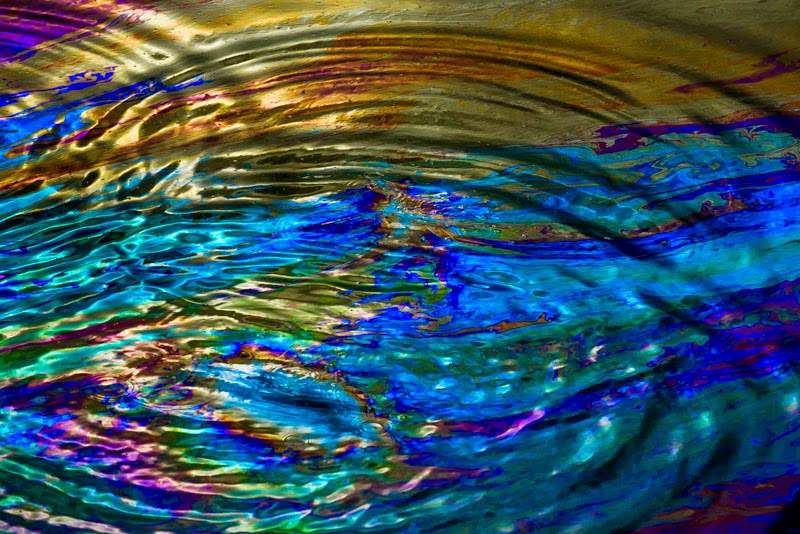 Lastly is my favourite image from this collection depicting the water’s surface lined with reflective oil that is distorted by ripples. I love the perspective the ripples give water and the composition of the many recurring rings inside the frame. Its populated location, current time period and abstract view can tell us a lot about the context and tone of this image. This piece is named after ‘Hephaestus’ the Greek god of blacksmiths, craftsmen, metals and fire. This is a very obvious connection between the metallic shine of the oil and the ‘Greek god of metal’. Because of the titles of each of these pieces being related to Greek mythology, we can assume there is a greater meaning behind the beauty of each image. However, since researching further into this series I have found that for Hirsch, it’s the composition that fascinates him. In an interview about his work, he explains that “a lot of people see an environmental disaster. I just want the pictures to look beautiful”. This quote tells us that the meaning of these images is up to the viewer, some may choose to see the tragedy and others simply the beauty. For me, I believe the meaning of this image is very strongly orientated towards this environmental issue. This oily subject matter and its array of man-made colours is directly linked to the pollution we face in current times paired with the result of sustaining populated cities. I believe that the recurring ringlets in this photograph can symbolise humanity’s devastating and repetitive actions against nature and the beautiful colours shows our distraction and ignorance towards the subject. Overall I love the abstract nature of this image as it contains lots of intense reflective light creating brilliantly contrasted tones. These shadows in the water create a great perspective for this photograph and give us a strong clue for understanding the subject matter. My favourite factor in this image is, of course, the brilliant and vibrant colours that flow from, and contrast,each other.
Lastly is my favourite image from this collection depicting the water’s surface lined with reflective oil that is distorted by ripples. I love the perspective the ripples give water and the composition of the many recurring rings inside the frame. Its populated location, current time period and abstract view can tell us a lot about the context and tone of this image. This piece is named after ‘Hephaestus’ the Greek god of blacksmiths, craftsmen, metals and fire. This is a very obvious connection between the metallic shine of the oil and the ‘Greek god of metal’. Because of the titles of each of these pieces being related to Greek mythology, we can assume there is a greater meaning behind the beauty of each image. However, since researching further into this series I have found that for Hirsch, it’s the composition that fascinates him. In an interview about his work, he explains that “a lot of people see an environmental disaster. I just want the pictures to look beautiful”. This quote tells us that the meaning of these images is up to the viewer, some may choose to see the tragedy and others simply the beauty. For me, I believe the meaning of this image is very strongly orientated towards this environmental issue. This oily subject matter and its array of man-made colours is directly linked to the pollution we face in current times paired with the result of sustaining populated cities. I believe that the recurring ringlets in this photograph can symbolise humanity’s devastating and repetitive actions against nature and the beautiful colours shows our distraction and ignorance towards the subject. Overall I love the abstract nature of this image as it contains lots of intense reflective light creating brilliantly contrasted tones. These shadows in the water create a great perspective for this photograph and give us a strong clue for understanding the subject matter. My favourite factor in this image is, of course, the brilliant and vibrant colours that flow from, and contrast,each other.





